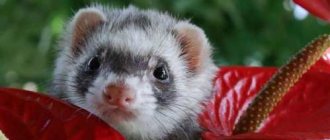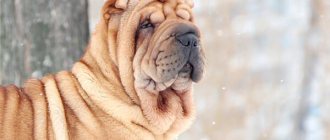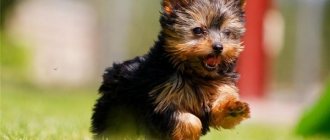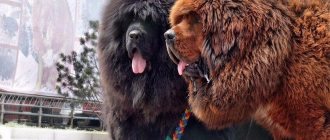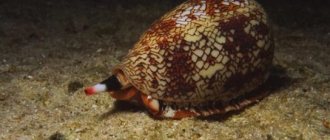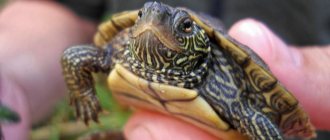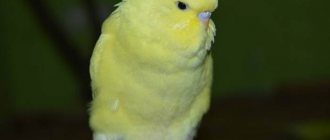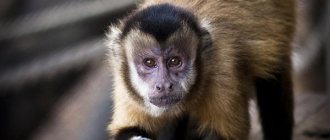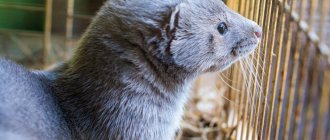- Wild animals
- >>
- Mammals
The ferret , or domestic ferret, is a very active and lively animal, and its behavioral needs are not easily met in a living environment such as our living rooms. However, ferrets are becoming increasingly popular as pets. The ferret is believed to be a subspecies of the ferret and has the same long body as the ferret and weasel.
Origin of the species and description
Photo: Fretka
Ferrets (Mustela putorius furo) are small carnivores belonging to the marten family. The Romans used frets to hunt rabbits. Today they are widely accepted as pets. Handling and manually holding ferrets can be difficult, but most traditional dispensing methods are feasible. The ferret is a domestic animal that is considered native to Europe.
Fun Fact: The name fretka comes from the Latin word "furonem", which means thief, no doubt due to their mischievous nature: ferrets are notorious for stealing light or shiny objects and hiding them.
The ferret is thought to have been domesticated about 2,500 years ago, which is about the same age as other domesticated animals such as donkey and goat. The ferret is used to help farmers track rabbits, and it does this by crawling into rabbit burrows, using its flexible, incredibly shaped body to its advantage as the ferret itself is often smaller than many rabbits. The rabbit is afraid to leave the hole where the ferret has invaded, and uses one of the many other exits from the hole to get away from the intruder ferret.
Video: Fretka
Frets share many anatomical, metabolic and physiological characteristics with humans. They are used as experimental models in studies including cystic fibrosis, respiratory virological diseases such as sudden acute respiratory syndrome and influenza, lung cancer, endocrinology and neurology (especially neurological changes associated with brain and spinal cord injury).
Ferrets' ability to vomit—and their high sensitivity to it—make this species the most widely used animal model in vomiting research, especially for testing potential antiemetic compounds.
Appearance and features
Photo: What a ferret looks like
The ferret is a domesticated form of the European ferret, which it resembles in size and habits and with which it interbreeds. The ferret has yellowish-white (sometimes brown) fur and pinkish-red eyes. She is also slightly smaller than a ferret, averaging 51cm in length, including a 13cm tail. Weighs about 1 kg.
Domestic ferrets reach their adult size at the age of one year. A typical domestic female ferret weighs between 0.3 and 1.1 kg. Domestic ferrets exhibit sexual dimorphism. Males can weigh between 0.9 and 2.7 kg, and neutered males often weigh less than intact males. Domestic ferrets have a long and slender body. Females usually have a length of 33 to 35.5 cm, and males - from 38 to 40.6 cm. The average length of the tail is from 7.6 to 10 cm. Domestic ferrets have large fangs and only 34 teeth. Each paw has a set of five non-retractable claws.
The black-footed ferret is similar in color to the common ferret, but has black eye masks and brownish-black markings on the feet and the tip of the tail. She weighs a kilogram or less, males are slightly larger than females. Body length is 38-50 cm, tail length is 11-15 cm. Domestic ferrets have been bred for a wide variety of fur colors and patterns.
The seven common fur colors are called:
- sable;
- silver;
- black sable;
- albino;
- dark-eyed white;
- cinnamon;
- chocolate.
The most common of these colors is sable. Examples of pattern types are: Siamese or pointed pattern, panda, badger and flame. Besides their choice of specific fur colors, domestic ferrets closely resemble their wild ancestors, the European ferret (Mustela putorius).
Preparing your place of residence
Please note that the ferret has sharp claws and teeth, coupled with inexhaustible curiosity . It is ideal if your home has walls covered with decorative stone and tiled floors. There are no gaps (for example, between the wall and furniture) where the fret will try to squeeze in: there it can get stuck and get injured.
In any case, the pet will need a cage (about 1*1*1 m), where it will occasionally rest, eat, drink and relieve itself. The following items are installed in the cage:
- food bowl;
- drinking bowl;
- house with soft bedding;
- hammock (optional);
- tray (without filler).
The house is often replaced by a shoebox with rags. Sometimes a polypropylene pipe is placed in the cage as a reminder of burrow life in nature. Many owners of frets allow them to move freely around the apartment, but always under supervision.
Ferrets often steal tasty morsels, stuffing them into secluded corners. This must also be monitored so that the reserves do not rot. Don't forget that the furo will dig the soil in flower pots and taste the objects it encounters, including furniture, wires, baseboards and shoes. This is why your ferret needs to be controlled.
Return to content
Where does the ferret live?
Photo: Homemade ferret
At present, almost no progress has been made in identifying the center of ferret domestication. It is believed that ferrets may have been domesticated from native European ferrets (Mustela putorius). There is evidence of domestic ferrets in Europe more than 2500 years ago. Currently, domestic ferrets are found throughout the world in homes as pets. In Europe, people sometimes use them for hunting.
The habitat of domestic ferrets was forest and semi-forest habitats near water sources. Domestic ferrets are kept as pets or working animals in human living quarters. Black-footed ferrets live in burrows and eat only dogs as prey and carrion. They were originally found living in populations ranging from southern Canada to the American West and northern Mexico. Since agricultural development on the Great Plains was largely eliminated, the ferrets nearly became extinct.
By 1987, the last members of the remaining population of 18 animals were captured from the wild in Wyoming, and a captive breeding program was begun. Of this group, seven females sired young that survived to adulthood. Since 1991, more than 2,300 of their descendants have been reintroduced to local populations in Wyoming, Montana, South Dakota, Kansas, Arizona, New Mexico, Colorado, Utah and Chihuahua, Mexico.
These reintroduction programs, however, have produced mixed results. While Utah, New Mexico, South Dakota and Kansas host self-sustaining populations, the species was classified as extinct in the wild by the International Union for Conservation of Nature (IUCN) between 1996 and 2008. Following a population reassessment in 2008, the IUCN listed the black-footed ferret as an endangered species.
Now you know how to care for your ferret at home. Let's take a look at what you should feed your ferret.
What does a ferret eat?
Photo: Ferret ferret
Ferrets are small carnivorous mammals and, therefore, the diet of pet ferrets should consist mainly of meat. In the wild, they mainly hunt mice and small rabbits, and sometimes they may be lucky enough to catch a small bird.
Domestic ferrets are natural carnivores and require a meat-like diet. Food for domestic ferrets must contain taurine, at least 20% fat and 34% animal protein. They can also be fed raw meat, but this alone is not enough. If they were in the wild, they would get nutrients from eating all parts of the animal, such as the liver, heart and other organs. Sometimes pet ferrets are fed supplements (vitamins) to meet nutritional needs that are not met by commercial foods.
Interesting fact: The metabolism of homemade ferret is very high, and food will pass through the digestive tract in 3-5 hours. Therefore, a domestic ferret will need to eat about 10 times a day. House ferrets also have an olfactory imprint. What they are fed during the first 6 months of their life is what they will recognize as food in the future.
The ferret needs a lot of fresh water and a diet high in fat and protein. Many ferret owners give them cat or kitten food, which is largely due to the fact that there is simply very little food available for ferrets. In any case, you'll want to avoid fish and fish-flavored fish food, which can create a litter box odor problem, and don't feed your ferret dog food, as this will fill her up without providing some essential nutrients.
You should also not give your ferret food that people eat, as many foods are toxic or indigestible. Chocolate, caffeine, tobacco products, cola, coffee, tea, ice cream, milk and onions should be avoided. However, ferrets need variety and will do almost anything for fun, including training techniques such as sitting, toe walking, begging and rolling over. You can reward your pet for desired behavior or simply add variety to your ferret's diet with vegetables, fruits and treats.
Nutrition
Ferrets are predators by nature, so when choosing a diet for your pet, you should take into account some nuances. Regular live food is an ideal option for ferrets. It is better to choose middle-aged rodents and birds for feeding. Young individuals have little fat, while old ones, on the contrary, have too much. Mice must be specially bred for feeding. Additional diets for ferrets can include:
- chickens;
- mealworms;
- feeding cockroaches.
Porridge with added meat. This may also include bones and offal in the form of minced meat. An indispensable component of such nutrition should be a vitamin complex for the pet. Your ferret can be given low-fat cottage cheese with a high calcium content.
Dry food. In modern stores it is difficult to find this type of food for ferrets, so it can be replaced with food for kittens. When choosing the type of food for your ferret, you need to remember that he should not be given fresh meat or dry food. You need to choose one thing.
The decorative ferret needs a large amount of water. Chlorinated water should be avoided, preferring boiled water. There should always be access to the drinking bowl; the water should be changed at least once a day.
Features of character and lifestyle
Photo: Fretka at home
Today, the ferret is becoming an increasingly popular pet around the world, thanks to its small size and calm temperament. A number of countries have laws to restrict the use of ferrets to try to prevent them from becoming pests, as ferrets can be quite destructive if released into the wild, especially if they are not native to the country.
Most ferrets spend an average of 18 hours sleeping each day, and they have been noted to sleep for about six hours at a time before waking up to play and eat, and typically return to sleep patterns after about an hour or so Togo. Ferrets are also most active at dusk and dawn, when they are not completely light or dark.
House ferrets are naturally crepuscular, with periods of activity during dawn and dusk. They often change this activity period depending on when their owner is around to give them attention. Domestic ferrets are playful and picky. They often communicate with other beloved ferrets, cats and dogs in a friendly manner. Domestic ferrets will seek attention. They are naturally inquisitive and will tunnel into or under anything. They can be taught tricks and respond to discipline. Pet ferrets have a habit of urinating and defecating in the same places and can therefore be trained to use a litter box.
Ferrets are known for their game of hide and seek, which is especially noticeable in those kept as pets. While it's not known exactly what the ferret will be hiding, owners have reported finding caches of everything from toys to remote controls and keys, and even bags of onions and pizza slices.
Ferrets use different body languages. Some of these behaviors are dancing, fighting, and chasing. They will "dance" when they are happy and excited, jumping in all directions. Fighting is a behavior that involves two or more ferrets. They will roll around with each other, bite and kick, usually in a playful manner. Stalking involves sneaking up on a toy or other animal in a low position.
Lifestyle
Frets usually sleep about 18 hours every day. They sleep for about 6 hours, then play and eat, after which they sleep again. Animals are more active at dawn. Sometimes they can change the period of activity due to the fact that they want to devote more time to the owner.
Ferrets are quite picky and always want more attention to themselves.
These animals can be made more disciplined and taught some tricks. They can easily be trained to use a litter box instead of a toilet.
These carnivores have some body languages. They can dance and wrestle. In moments of happiness, animals often jump and run. They fight playfully: they bite and chase each other, roll on the floor.
Social structure and reproduction
Photo: Baby ferrets
Male domestic ferrets will mate with as many females as they have access to. Male ferrets have a hooked penis. Once they have penetrated the female, they cannot be separated until the male is free. Males will also bite the back of the female's neck during mating. Homemade frets have a seasonal polyester cycle. Domestic ferrets - males fall into the rut from December to July, females - between March and August. Males are ready to breed when they develop a discolored yellowish undercoat. Increased oil production in the skin glands causes a change in the color of the undercoat.
A female in estrus is defined by a swollen, pink vulva due to increased estrogen. Females may go into lactation in some cases. Lactational estrus occurs when the litter size is less than 5 pups. Lactational estrus is the period when the female returns to estrus as she lactates the litter she just had. Healthy domestic ferrets can have up to three successful litters per year and up to 15 young.
The duration of pregnancy is about 42 days. Young domestic ferrets suffer at birth and require parental care for about 8 weeks. Cubs are born deaf and with their eyes closed. Newborns usually weigh between 6 and 12 grams. Children's incisors appear 10 days after birth. The eyes and ears open when they reach 5 weeks. Weaning occurs at 3-6 weeks of age. At 8 weeks, the cubs have 4 permanent canines and are capable of eating solid food. This is often the time when breeders release their babies to new owners. Females reach sexual maturity at the age of 6 months.
Owner reviews
Everyone who has acquired a ferret warns that the apartment must be perfectly clean, otherwise the pet will die . The animal puts everything it sees into its mouth, and often the cause of death is an ordinary plastic bag. The cage should be very large and with all kinds of toys.
Give him the opportunity to organize a warehouse, but periodically look there for stolen passports, phones and socks, and also throw out rotten food. Buy expensive food like Bosh (for different ages): let it always be in a bowl. Pamper your ferrets with warm baths as they love to dive and swim. Keep in mind that a ferret has an excellent metabolism, which is why he goes to the toilet 100 times a day. In order not to wash the floors around the clock, train him to use the tray from childhood.
Return to content
Natural enemies of ferrets
Photo: What a ferret looks like
Ferrets are preyed upon by golden eagles and great horned owls, as well as other carnivores such as coyotes and badgers. Poisons used to control them, especially sodium monofluoroacetate and strychnine, likely contribute to deaths when ferrets eat poisoned animals. Additionally, black-footed ferrets are extremely susceptible to many infectious diseases such as canine distemper. Bubonic plague may severely reduce prairie dog populations and thus cause food shortages for black-footed ferrets, but it is unknown whether ferrets themselves become infected with the plague.
Domestic ferrets have no natural predators because they are domesticated. Predators such as hawks, owls or larger carnivorous mammals would hunt them if they had the chance. On the other hand, pet ferrets can be predators of certain animals. They were known to kill poultry. Domestic ferrets will also hunt rabbits and other small game when used for breeding by their owners. There are also records of ferrets being used to control rodent populations on ships during the American Revolutionary War.
Domestic ferrets are not able to survive for long in the wild. As pets, they can live 6-10 years. There are several diseases and disorders that can shorten the lifespan of pet ferrets if left untreated.
Some of these diseases and disorders include:
- canine distemper;
- feline distemper;
- rabies;
- parasites;
- bone marrow suppression;
- insulinoma;
- adrenal gland diseases;
- diarrhea;
- cold;
- flu;
- ringworm;
- heatstroke;
- urinary stones;
- cardiomyopathy.
Ferret selection
If the decision to purchase has already been made, then consider a few recommendations for choosing a ferret:
First, carefully study the animal's father and mother. They must be large. After all, a female with good physical shape will give birth to strong babies.
Also, pay attention to the behavior of the selected animal. He should not be aggressive and angry.
Note!
- How to protect a gazebo from rain and wind in summer and snow in winter - a review of the best options
Chicken - description, types, classification, nutrition and maintenance of domestic chicken (115 photos and videos)
- Sheep - lifestyle, description of breeds, habitat, feeding and care of sheep when growing (145 photos and videos)
It is mandatory to present all certificates and documents in the store. Sometimes, you can ask for the animal's pedigree. Only after studying the paper questions can you make a purchase.
